

The global education crisis – even more severe than previously estimated
Ellinore carroll, joão pedro azevedo, jessica bergmann, matt brossard, gwang- chol chang, borhene chakroun, marie-helene cloutier, suguru mizunoya, nicolas reuge, halsey rogers.
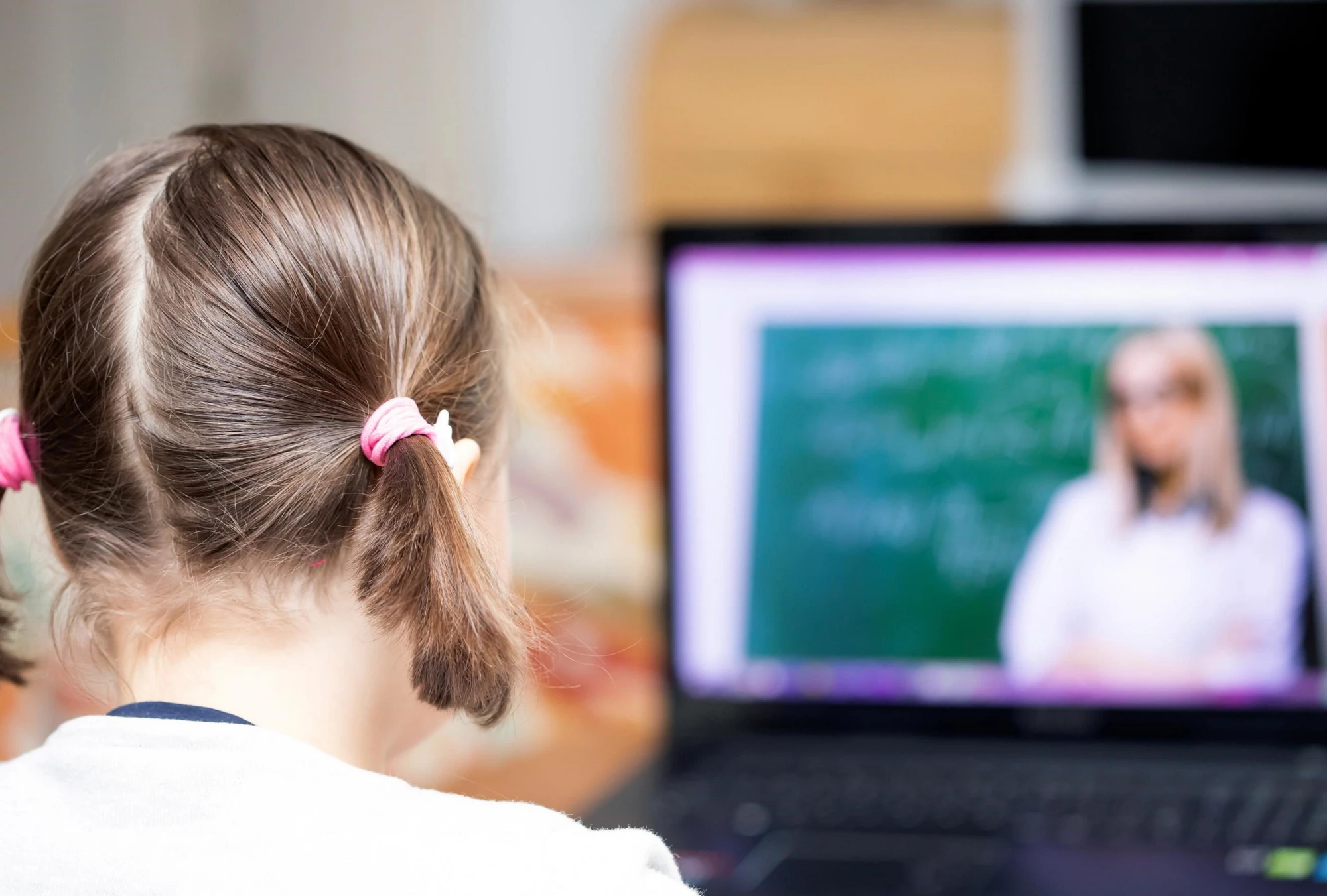
In our recent The State of the Global Education Crisis: A Path to Recovery report (produced jointly by UNESCO, UNICEF, and the World Bank), we sounded the alarm: this generation of students now risks losing $17 trillion in lifetime earnings in present value, or about 14 percent of today’s global GDP, because of COVID-19-related school closures and economic shocks. This new projection far exceeds the $10 trillion estimate released in 2020 and reveals that the impact of the pandemic is more severe than previously thought .
The pandemic and school closures not only jeopardized children’s health and safety with domestic violence and child labor increasing, but also impacted student learning substantially. The report indicates that in low- and middle-income countries, the share of children living in Learning Poverty – already above 50 percent before the pandemic – could reach 70 percent largely as a result of the long school closures and the relative ineffectiveness of remote learning.
Unless action is taken, learning losses may continue to accumulate once children are back in school, endangering future learning.
Figure 1. Countries must accelerate learning recovery
Severe learning losses and worsening inequalities in education
Results from global simulations of the effect of school closures on learning are now being corroborated by country estimates of actual learning losses. Evidence from Brazil , rural Pakistan , rural India , South Africa , and Mexico , among others, shows substantial losses in math and reading. In some low- and middle-income countries, on average, learning losses are roughly proportional to the length of the closures—meaning that each month of school closures led to a full month of learning losses (Figure 1, selected LMICs and HICs presents an average effect of 100% and 43%, respectively), despite the best efforts of decision makers, educators, and families to maintain continuity of learning.
However, the extent of learning loss varies substantially across countries and within countries by subject, students’ socioeconomic status, gender, and age or grade level (Figure 1 illustrates this point, note the large standard deviation, a measure which shows data are spread out far from the mean). For example, results from two states in Mexico show significant learning losses in reading and in math for students aged 10-15. The estimated learning losses were greater in math than reading, and they disproportionately affected younger learners, students from low-income backgrounds, and girls.
Figure 2. The average learning loss standardized by the length of the school closure was close to 100% in Low- and Middle-Income countries, and 43% in High-Income countries, with a standard deviation of 74% and 30%, respectively.
While most countries have yet to measure learning losses, data from several countries, combined with more extensive evidence on unequal access to remote learning and at-home support, shows the crisis has exacerbated inequalities in education globally.
- Children from low-income households, children with disabilities, and girls were less likely to access remote learning due to limited availability of electricity, connectivity, devices, accessible technologies as well as discrimination and social and gender norms.
- Younger students had less access to age-appropriate remote learning and were more affected by learning loss than older students. Pre-school-age children, who are at a pivotal stage for learning and development, faced a double disadvantage as they were often left out of remote learning and school reopening plans.
- Learning losses were greater for students of lower socioeconomic status in various countries, including Ghana , Mexico , and Pakistan .
- While the gendered impact of school closures on learning is still emerging, initial evidence points to larger learning losses among girls, including in South Africa and Mexico .
As a result, these children risk missing out on much of the boost that schools and learning can provide to their well-being and life chances. The learning recovery response must therefore target support to those that need it most, to prevent growing inequalities in education.
Beyond learning, growing evidence shows the negative effects school closures have had on students’ mental health and well-being, health and nutrition, and protection, reinforcing the vital role schools play in providing comprehensive support and services to students.
Critical and Urgent Need to Focus on Learning Recovery
How should decision makers and the international community respond to the growing global education crisis?
Reopening schools and keeping them open must be the top priority, globally. While nearly every country in the world offered remote learning opportunities for students, the quality and reach of such initiatives varied, and in most cases, they offered a poor substitute for in-person instruction. Stemming and reversing learning losses, especially for the most vulnerable students, requires in-person schooling. Decision makers need to reassure parents and caregivers that with adequate safety measures, such as social distancing, masking, and improved ventilation, global evidence shows that children can resume in-person schooling safely.
But just reopening schools with a business-as-usual approach won’t reverse learning losses. Countries need to create Learning Recovery Programs . Three lines of action will be crucial:
- Consolidating the curriculum – to help teachers prioritize essential material that students have missed while out of school, even if the content is usually covered in earlier grades, to ensure the curriculum is aligned to students’ learning levels. As an example, Tanzania consolidated its curriculum for grade 1 and 2 in 2015, reducing the number of subjects taught and increasing time on ensuring the acquisition of foundational numeracy and literacy.
- Extending instructional time – by extending the school day, modifying the academic calendar to make the school year longer, or by offering summer school for all students or those in need. In Mexico , the Ministry of Public Education announced planned extensions to the academic calendar to help recovery. In Madagascar , the government scaled up an existing two-month summer “catch-up” program for students who reintegrate into school after having left the system.
- Improving the efficiency of learning – by supporting teachers to apply structured pedagogy and targeted instruction. A structured pedagogy intervention in Kenya using teachers guides with lesson plans has proven to be highly effective. Targeted instruction, or aligning instruction to students’ learning level, has been successfully implemented at scale in Cote D’Ivoire .
Finally, the report emphasizes the need for adequate funding. As of June 2021, the education and training sector had been allocated less than 3 percent of global stimulus packages. Much more funding will be needed for immediate learning recovery if countries are to avert the long-term damage to productivity and inclusion that they now face.
Learning Recovery as a Springboard to an Accelerated Learning Trajectory
Accelerating learning recovery has benefits that go well beyond short-term gains: it can give children the necessary foundations for a lifetime of learning, and it can help countries increase the efficiency, equity, and resilience of schooling. This can be achieved if countries build on investments made and lessons learned during the crisis—most notably, with a focus on six areas:
- Assessing student learning so instruction can be targeted to students’ learning levels and specific needs.
- Investing in digital learning opportunities for all students, ensuring that technology is fit for purpose and focused on enhancing human interactions.
- Reinforcing support that leverages the role of parents, families, and communities in children’s learning.
- Ensuring that teachers are supported and have access to practical, high-quality professional development opportunities, teaching guides and learning materials.
- Increasing the share of education in the national budget allocation of stimulus packages and tying it to investments mentioned above that can accelerate learning.
- Investing in evidence building - in particular, implementation research, to understand what works and how to scale what works to the system level.
It is time to shift from crisis response to learning recovery. We must make sure that investments and actions for learning recovery lay the foundations for more efficient, equitable, and resilient education systems—systems that truly deliver learning and well-being for all children and youth. Only then can we ensure learning continuity in the face of future disruption.
The report was produced as part of the Mission: Recovering Education 2021 , through which the World Bank , UNESCO , and UNICEF are focused on three priorities: bringing all children back to schools, recovering learning losses, and preparing and supporting teachers.
Get updates from Education for Global Development
Thank you for choosing to be part of the Education for Global Development community!
Your subscription is now active. The latest blog posts and blog-related announcements will be delivered directly to your email inbox. You may unsubscribe at any time.

Young Professional

Lead Economist

Education Researcher – UNICEF Office of Research-Innocenti

Chief, Education – UNICEF Office of Research-Innocenti

Chief of Education Policy Section, Division of Policies and Lifelong Learning Systems, UNESCO Education Sector

Director, Division for Policies and Lifelong Learning Systems, UNESCO Education Sector
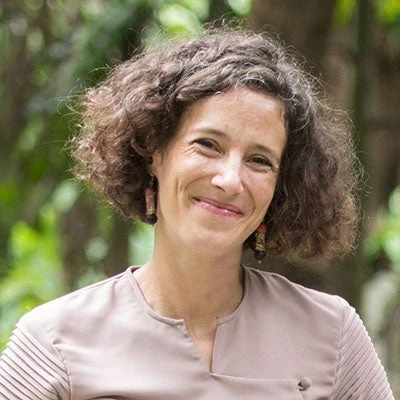
Senior Economist

Senior Advisor, Statistics and Monitoring (Education) – UNICEF New York HQ

Senior Adviser Education, UNICEF Headquarters

Lead Economist, Education Global Practice
Join the Conversation
- Share on mail
- comments added
- Understanding Poverty
The State of the Global Education Crisis: A Path to Recovery
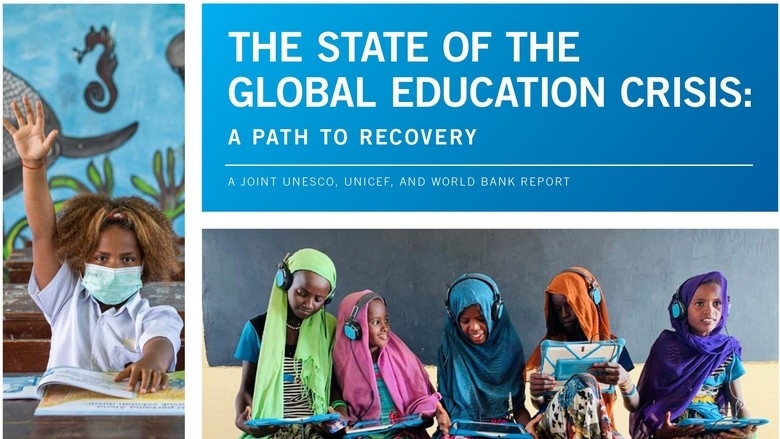
The global disruption to education caused by the COVD-19 pandemic is without parallel and the effects on learning are severe. The crisis brought education systems across the world to a halt, with school closures affecting more than 1.6 billion learners. While nearly every country in the world offered remote learning opportunities for students, the quality and reach of such initiatives varied greatly and were at best partial substitutes for in-person learning. Now, 21 months later, schools remain closed for millions of children and youth, and millions more are at risk of never returning to education. Evidence of the detrimental impacts of school closures on children’s learning offer a harrowing reality: learning losses are substantial, with the most marginalized children and youth often disproportionately affected.
Countries have an opportunity to accelerate learning recovery and make schools more efficient, equitable, and resilient by building on investments made and lessons learned during the crisis. Now is the time to shift from crisis to recovery – and beyond recovery, to resilient and transformative education systems that truly deliver learning and well-being for all children and youth.
Executive Summary
Arabic | English | French | Portuguese | Spanish
Event Presentation
Event recording.
- Press Release: Learning Losses from COVID-19 Could Cost this Generation of Students Close to $17 Trillion in Lifetime Earnings
- Event: The State of the Global Education Crisis: A Path to Recovery
#LeadingSDG4 | Education2030
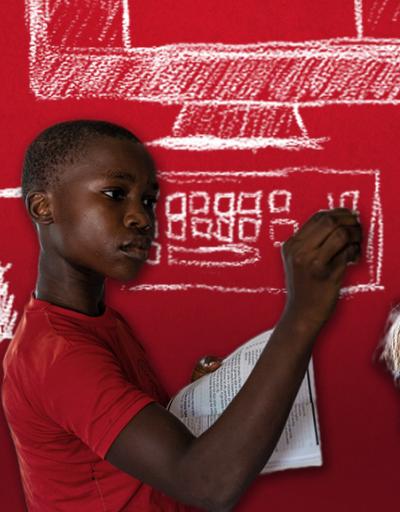
- Dashboard of country commitments and actions
- Country profiles
- Global Education Observatory
- SDG4 scorecard
- Evidence and policy
- Education financing
- Global Education Coalition
- Futures of Education
- Greening Education Partnership
- Gateways to Public Digital Learning
- The Coalition for Foundational Learning
- Education in Crisis Situations: Partnership for Transformative Actions
- Global Platform for Gender Equality and Girls’ and Women’s Empowerment in and through Education
- Global Youth Initiative
- Good practices
- Youth Declaration on Transforming Education
- SDG4 Youth & Student Network
- Youth Resources
Education in Crisis Situations
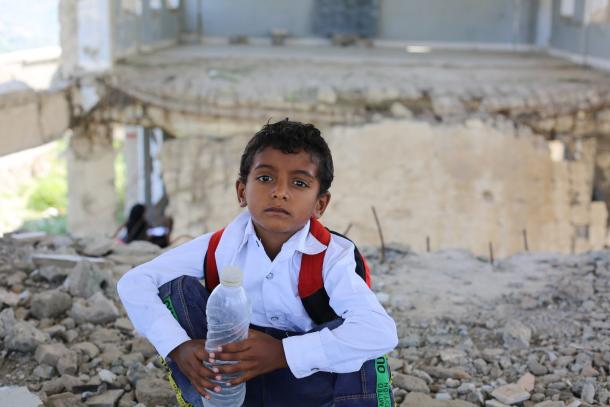
The Global Initiative – Partnership for Transformative Actions in Crisis Situations in the first global multi-stakeholder initiative to mobilize cross-country cooperation and bring actions to scale while addressing immediate educational needs at national, regional, and global levels.
As 244 million children and young people are currently affected by armed conflict, health, or climate-induced disasters, political or economic crises, and associated forced displacement, including refugee crises, the need to intervene and put an end to the vicious cycle is urgent. Crises dramatically impact the longer-term investment required to transform education systems and to ensure their resilience to future disruption.
With the main objective of advocating for and implementing the Humanitarian-Development- Peacebuilding Triple Nexus, the Global Initiative was launched as the main framework for its actions which targets 4 areas:
- Inclusive education: Improve equitable inclusive education access and learning outcomes for children and youth affected by crises.
- Finance: Protect and improve external financing, ensure it reaches learners equitably and aligns with national planning priorities and commitments to international conventions.
- System Strengthening: Build inclusive, crisis-resilient education systems that ensure protection of the right to education for children and youth, address the needs of all learners in a holistic way, and include information and tools related to safeguarding health, wellbeing, nutrition, water, sanitation and protection from violence, sexual exploitation and abuse.
- Interlinked priorities: Scale and mainstream high-impact and evidence-based interventions into policy and programming efforts with a focus on eight inter-linked priorities: (i) teachers; (ii) community participation; (iii) gender equality and inclusion; (iv) early childhood education; (v) mental health and psychosocial support; (vi) protection from violence; (vii) equitable delivery of education technology and innovation, especially for the most marginalized children; and (viii) meaningful child and youth engagement.

Strategies and activities
For the Partnership, implementing this initiative means making it relevant for those most in need, with a focus on tangible actions where it matters most: on the ground, in the classroom, and in the experience of teachers and learners alike. Moving forward is about making this Call to Action meaningful in concerned countries and thinking of its implementation based on the different feedback and contexts.
Thus, out of the 36 members who have signed off, an agreement was made to focus on the following 14 countries: Afghanistan, Bangladesh, Colombia, Ecuador, Ethiopia, Haiti, Iraq, Jordan, Niger, South Sudan, Uganda, Ukraine, Yemen, Zambia. Based on National consultations held in the 14 countries, the Operationalization plan of the Global Initiative – Partnership for Transformative Actions in Crisis Situations focuses on solutions that:
- Identifies ways to strengthen political accountability for transforming and financing education in crisis situations
- Draws the main guidelines to implement the 4 pillars of the Global Initiative
- Establishes a clear roadmap staged with milestones until December 2024.
- Map the national consultation commitments to concrete country-level actions supported by engaged EiEPC stakeholders on the ground.
- Anchor interventions to national, regional, and global monitoring and reporting mechanisms with a first status report published in September 2025 reflecting adaptations and adjustments that enable meaningful, contextualized action and monitoring.
Co-conveners
The co-conveners of the Call-to-Action: Education in crisis situations are:
- Education Cannot Wait
- Global Partnership for Education
Partners
The Global Initiative has been signed and endorsed by the following 36 Member States: Cameroon, Canada, Chad, Denmark, Ecuador, Ethiopia, Germany, Haiti, Jordan, Lebanon, Lithuania, Madagascar, Niger, Norway, Pakistan, Palestine, Philippines, Qatar, South Sudan, Sweden, Switzerland, Tanzania, Turkey, Uganda, Ukraine, United Kingdom, Uzbekistan, European Union, ECW, GPE, UNESCO, UNHCR, UNICEF, INEE, EiE Champion Group (coalition of more than 90 CSOs), The LEGO Foundation
How to engage
The best way to engage for countries and organizations remains to endorse the CtA. Being engaged means to make a living and transformative commitment for the most in need and to fully capitalize on this unique opportunity. It must be done by:
- Nurturing and sustaining the political commitment and resources mobilized to support countries to adhere to the pillars of the Call to Action
- Engaging all stakeholders at local, national, regional, and global levels to create a movement beyond ministries of education, led by learners and teachers across the world, inspired by civil society, and connected with broader movements for positive change.
- Strengthening existing clusters and working groups on Education in Emergencies and reinforce open and effective Triple Nexus partnership platforms.
- Gathering robust data and evidence to transpose the national consultation commitments to concrete country-level actions supported by engaged EiEPC stakeholders on the ground
- Taking proactive and transformative measures to address the key barriers and bottlenecks to education in crisis situations, with a focus on the most marginalized populations.
- Accounting for progress on global, regional, and national commitments on education in crisis situations in and through education.
Related items
- UN & International cooperation

- Advisory Board
- Policy Dialogues
- Organigramme
- Intergovernmental Support
- Capacity Building
- Climate Action
- Global Partnerships
- Leaving No One Behind
- Science, Technology and Innovation
- Strengthening Institutions
- Thought Leadership
- Latest from DESA
- Publications
- Policy Briefs
- Working Papers
- UN DESA Voice
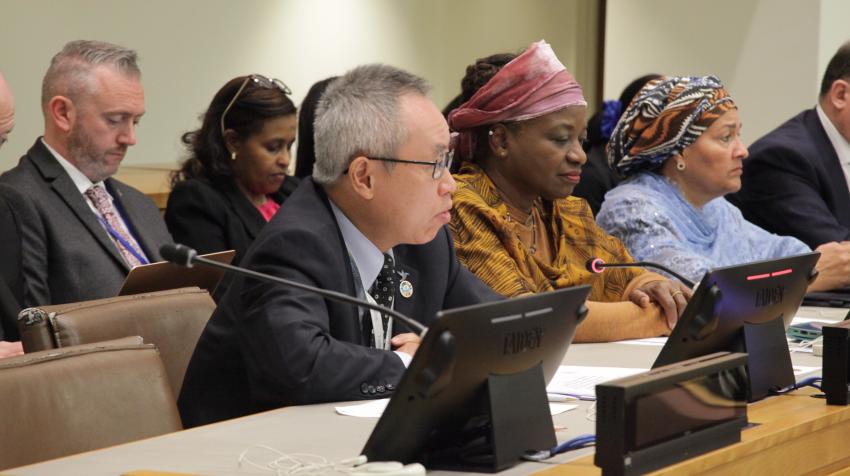
UN calls for urgent action to address education crisis as global primary school-age population peaks in 2023
10 April 2023 - The global population of primary-school-aged children is expected to reach an all-time high of 820 million in 2023. The number of secondary school children is also on the rise, but the education sector, shaken by the COVID-19 pandemic, is struggling to meet the rising demand. Against this challenging backdrop, the United Nations Commission on Population and Development convenes this week, from 10 to 14 April, to discuss the vital impact that investing in quality education has on promoting opportunity and prosperity, advancing gender equality and ensuring environmental sustainability.
“School closures and teaching disruptions during the COVID-19 pandemic have worsened existing inequalities in access to and quality of education,” said Mr. Li Junhua, UN Under-Secretary-General for Economic and Social Affairs. “Low-income and lower-middle-income countries face extraordinary challenges in recovering from the resulting learning losses and in resuming progress towards the universal completion of primary and secondary education by 2030.”
These challenges are felt most sharply in sub-Saharan Africa, where the primary-school-aged population is projected to increase by 86 million between 2022 and 2050 and where education systems were hard-hit by the COVID-19 pandemic. Secondary schools in the region can only accommodate 36 per cent of qualifying students. These trends require significant investments in education and skills training in the coming years.
“Investing in quality education today is essential to transform lives, economies and societies tomorrow,” stressed Dr. Natalia Kanem, Executive Director of UNFPA, the United Nations sexual and reproductive health agency. “Education is game-changing, especially for girls. When girls can finish their schooling, avoid early marriage and childbearing, and make a safe, healthy transition to adulthood, they can chart their own path and contribute to a healthier, more equitable and prosperous future for themselves and their communities.”
Deliberations at the Commission on Population and Development will inform the High-level Political Forum in July, as well as the upcoming SDG Summit to be convened by the United Nations General Assembly in September 2023.
Five focus areas of this year’s Commission on Population and Development
The adverse impacts of COVID-19 on education The COVID-19 pandemic exposed deep-seated flaws in education systems and highlighted pre-existing inequalities in access to education. Enrolment shortfalls were compounded by profound deficiencies in infrastructure, digital access, modern teaching methods and qualified teachers. Low-income and lower-middle-income countries experienced significant cuts in public spending on education making it all the more difficult to recover from learning losses.
Digital inclusion: key to reducing inequalities Digital inclusion is a necessity of modern life. The pandemic also brought digital inequalities to the fore. In 2021, some 90 per cent of the population in developed countries used the Internet, compared with only 27 per cent in the least developed countries. The digital divide is especially pronounced for women and girls. Globally, women are 21 per cent less likely to be online compared with men, rising to half as likely in the least developed countries.
Education: key to realizing the demographic dividend and empowering women Education is a key determinant of development. It is among the most powerful predictors of both economic productivity and income growth as well as population health and well-being. Evidence suggests that a substantial portion of the demographic dividend (a boost in per capita economic growth derived from an increase in the relative size of the working-age population during a particular stage of the demographic transition) may in fact be an education dividend. The education of women and girls contributes significantly to the health and survival of children and the eradication of child marriage, early childbearing and unplanned pregnancy. Combined with family planning services, the expansion of primary and secondary education has afforded women greater autonomy in reproductive decision-making. Education also increases women’s access to jobs in the formal sector, reduces vulnerable employment and lowers gender wage inequality.
Sexuality education: key to empowering young people Sexuality education is a crucial and cost-effective means to protect the health and rights of people at all stages of their lives. Well-designed curricula to deliver comprehensive education on sexuality, gender, relationships and rights in participatory, learner centred, age-appropriate and culturally relevant ways can help to foster positive social norms, promote gender equality and reduce gender-based violence.
Lifelong learning: key to sustained, inclusive economic growth Globally, over 770 million adults, most of whom are women, are illiterate. Moreover, with unprecedented numbers of people living longer, lifelong learning and the re-skilling of workers are more important than ever. Nevertheless, in nearly half of all countries, lifelong learning accounts for less than 2 per cent of education budgets. Empowering workers of all ages can lower the burden on health and pension systems and support inclusive economic growth.
Find out more about the 56th session of the Commission on Population and Development and follow the plenary session via UN Web TV.
For more information about the Commission on Population and Development, visit: www.un.org/development/desa/pd/content/CPD
About UN DESA
Un desa products, un desa divisions.
- Office of Intergovernmental Support and Coordination for Sustainable Development
- Division for Sustainable Development Goals
- Population Division
- Division for Public Institutions and Digital Government
- Financing for Sustainable Development Office
- Division for Inclusive Social Development
- Statistics Division
- Economic Analysis and Policy Division
- United Nations Forum on Forests
- Capacity Development Programme Management Office

IMAGES
VIDEO
COMMENTS
A growing body of evidence suggests the learning crisis is, at its core, a teaching crisis. For students to learn, they need good teachers—but Fortunately for many students, in every country, there are dedicated and enthusiastic teachers who, despite all challenges, enrich and transform their lives.
The State of the Global Education Crisis: A Path to Recovery report (produced jointly by UNESCO, UNICEF, and the World Bank), we sounded the alarm: this generation of students now risks losing $17 trillion in lifetime earnings in present value, or about 14 percent of today’s glob.
The State of the Global Education Crisis: A Path to Recovery provides a stark reality check for education systems worldwide and presents a menu of policy actions for recovering learning and using this crisis as an opportunity to reinvent education—to make it more resilient, more equitable, and more efficient in delivering learning for all.
In a new report, The State of the Global Education Crisis: A Path to Recovery, we take stock of the state of education around the world after these prolonged school closures and discuss options to avoid this crisis inflicting a permanent scar on this generation’s human capital.
The global disruption to education caused by the COVD-19 pandemic is without parallel and the effects on learning are severe. The crisis brought education systems across the world to a halt, with school closures affecting more than 1.6 billion learners.
Taking proactive and transformative measures to address the key barriers and bottlenecks to education in crisis situations, with a focus on the most marginalized populations. Accounting for progress on global, regional, and national commitments on education in crisis situations in and through education. Partnership for Transformative Actions.
The COVID-19 crisis forced the global education community to learn some critical lessons, but also highlighted that transformation and innovation are possible.
The education of women and girls contributes significantly to the health and survival of children and the eradication of child marriage, early childbearing and unplanned pregnancy.